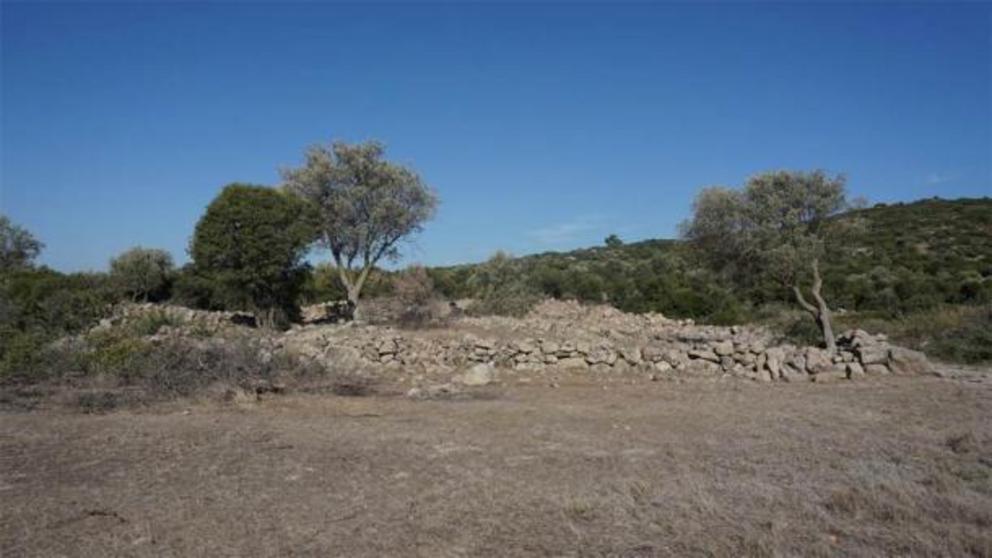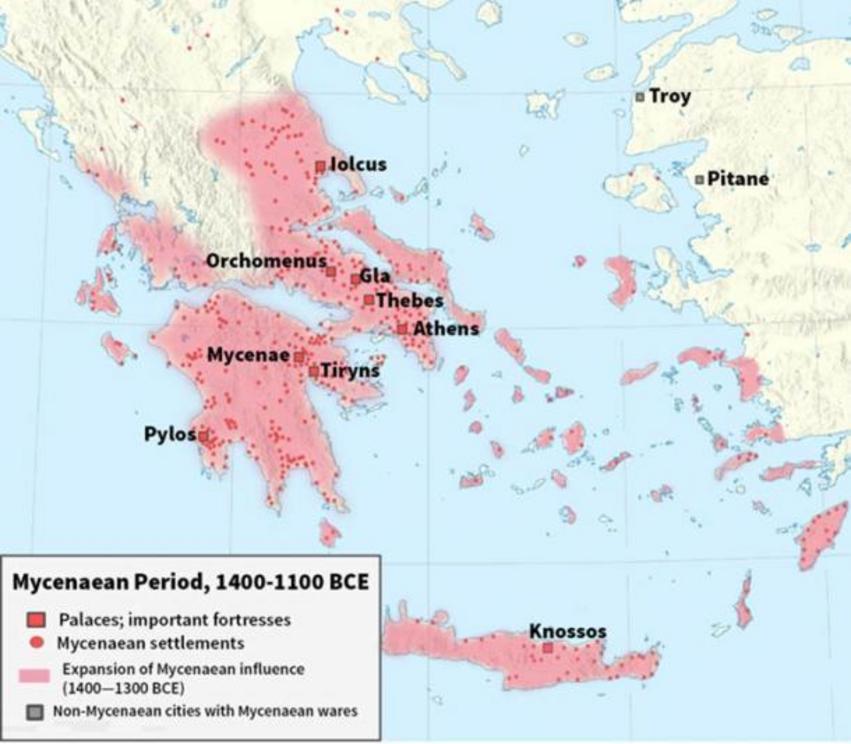Ancient temple of Aphrodite unearthed in modern Turkey
Top image: Architectural remains of the 2,500-year-old Aphrodite temple.
Archaeologists performing excavations in the Urla-Cesme Peninsula in western Turkey recently found something remarkable. They uncovered the remains of a 2,500-year-old temple dedicated to the worship of Aphrodite, the Greek goddess of love, beauty, and fertility.
For several years, revolving teams of archaeologists have been surveying and digging at a specially selected 17,220 square-foot (1,600 square-meter) site in the Turkish province of Izmir, where Urla and Cesme are located. So far, they’ve uncovered evidence of 35 separate human settlements that at one time occupied this space, including 16 sites that date all the way back to the Late Neolithic Age, which ended around 4500 BC in most of the world.
The shrine to the Greek goddess was constructed more recently, but represents one of the more notable discoveries made up to this point.
 The site of the 2,500-year-old Aphrodite Temple in the Urla-Cesme peninsula in western Turkey
The site of the 2,500-year-old Aphrodite Temple in the Urla-Cesme peninsula in western Turkey
Detecting the Temple of Aphrodite
“During our screening of the surface, we detected the Aphrodite Temple from the sixth century BC,” Professor Elif Koparal told Turkey’s Andalou News Agency . Koparal is an archaeologist from Mimar Sinan University in Istanbul and the leader of the current round of excavations. “Aphrodite was a commonly worshipped figure back then. It is a fascinating and impressive discovery.”
The cumulative discoveries of the archaeologists have confirmed that an extensive social and economic network existed in the Urla-Cesme-Izmir region in the distant past, Koparal added. This area of western Turkey is adjacent to the Aegean Sea coast, which made it a natural debarkation point for traders, adventurers, and other seaborne travelers, including migrants or refugees looking to form new communities centered around their own imported cultural beliefs and practices.
 Architectural remains of the 2,500-year-old Aphrodite Temple
Architectural remains of the 2,500-year-old Aphrodite Temple
A Brief History of the Ancient Greeks in Anatolia
The mysterious collapse of the ancient Mycenaean civilization in Greece , which began around the year 1100 BC, led to a disintegration of its existing forms of cultural, social, and economic organization. The country splintered into a diverse array of separate small independent communities, and many Greeks fled in search of more fertile locations to settle.
Greek migrants began to arrive on the western shores of Asia Minor in approximately the eighth century BC, and their exodus to this new and underdeveloped region continued for at least another two hundred years.
 The Mycenaean world expanded to the East
The Mycenaean world expanded to the East
Because of its proximity to the sea, the region now occupied by Izmir province would have been seen as an ideal spot to rebuild by Greek ex-patriots, and the discovery of the Temple of Aphrodite from the sixth century BC suggests that fleeing Greeks did indeed settle in this area in significant numbers.
Naturally, they brought their spiritual and metaphysical beliefs with them, including their adoration of their Olympic goddess of love and fertility . And under the circumstances, building a temple to Aphrodite that could bring good fortune to settlers in the region was an entirely logical and expected move. It would have stood as an enduring monument that would forever link them to their native culture, which united them and gave them a sense of shared purpose despite their exile from their homeland.
 Venus di Milo or Aphrodite of Milos (the Greek goddess of love) is one of the most famous Greek sculptures
Venus di Milo or Aphrodite of Milos (the Greek goddess of love) is one of the most famous Greek sculptures
The Thriving Aphrodite Cult in Anatolia
This is not the first major discovery connected to the Aphrodite spiritual tradition of the ancient Greek exile community in what is now Turkey, known to the Greeks as Anatolia, or ‘the East’.
The mecca of the flourishing Aphrodite cult in Anatolia was the city of Aphrodisias , a location so important that it was literally named after the goddess it honored. Built adjacent to a marble quarry, Aphrodisias was constructed in the second century BC, approximately 2000 kilometers (1242 miles) inland from Izmir, which reveals how deeply Greek settlers and their ideas ultimately penetrated into this region.
Ruins still standing at Aphrodisias include columns from the ancient temple, plus the crumbing remains of sculptures, statues, a stadium, bathhouses, a theater, a basilica, houses, a marketplace, and the grand statue of Aphrodite that once occupied the center of the temple. Aphrodisias was an active and vigorous center of Aphrodite worship during its time, until the Romans took control of the region in the first century AD and converted the city to the worship of Venus, their version of the goddess of love. When Christian influence in the region became dominant a few centuries later, they built a church on the site in recognition of its reputation as a sacred and special place.
This type of cultural and spiritual appropriation is far from uncommon in the ancient world (or in the modern world, for that matter). Aphrodite herself is an appropriated version of Ishtar , the goddess worshipped by the truly ancient cultures of Mesopotamia, which are associated with the founding of civilization more than five thousand years ago.
Even today, modern cultures frequently contain hidden elements of long-forgotten belief systems, adapted to suit current moods, tastes, and inclinations.
In Western Turkey, More Archaeological Wonders Await
The Aphrodite Temple at Urla-Cesme was originally discovered in 2016. But only now have excavations advanced to the point where archaeologists can extensively analyze the remains and catalog them in their entirety.
Unfortunately, the looting of artifacts is an ongoing problem in Turkey. To prevent the loss or destruction of these valuable finds, Koparal and her team have worked hard to gain the cooperation and trust of the local population, who have been recruited to help keep the temple site safe from thieves, vandals, and looters.
With 35 lost human settlements already discovered, there is little doubt that many other astounding and amazing treasures are waiting to be excavated at Urla-Cesme.

